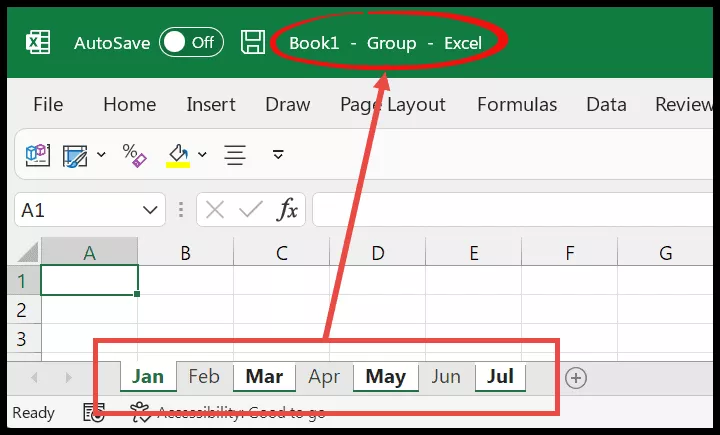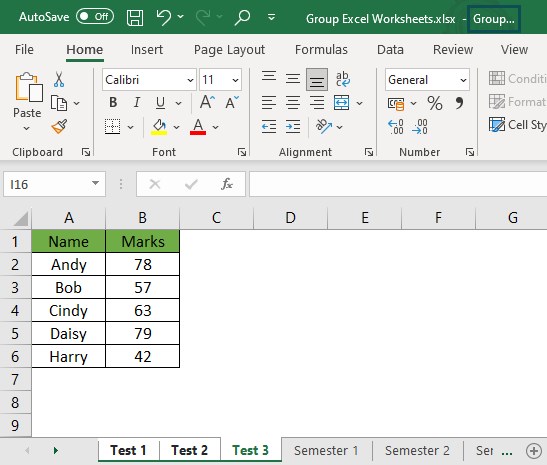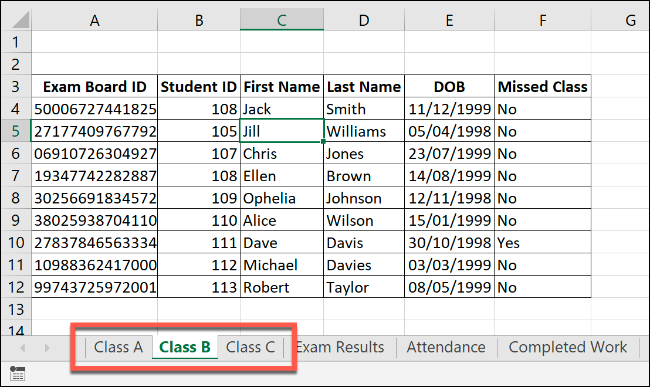Group Worksheets In Excel: How To Group And Ungroup Worksheets In Microsoft Excel
Worksheets don’t have to be boring. Think of a classroom alive with joy or a peaceful corner where children happily complete their projects. With a dash of creativity, worksheets can change from routine drills into engaging aids that encourage understanding. No matter if you’re a instructor creating activities, a DIY teacher seeking diversity, or just someone who enjoys learning play, these worksheet ideas will fire up your mind. Come on and jump into a world of ideas that blend education with excitement.
How To Group Worksheets On Excel
 studymediahensley.z21.web.core.windows.netHow To Group Worksheets In The Microsoft Excel
studymediahensley.z21.web.core.windows.netHow To Group Worksheets In The Microsoft Excel
 exceldownloads.comHow To Group And Ungroup Worksheets (Sheets) In Excel
exceldownloads.comHow To Group And Ungroup Worksheets (Sheets) In Excel
 excelchamps.comHow To Group Excel Worksheets Excel Worksheets Myexcelonline
excelchamps.comHow To Group Excel Worksheets Excel Worksheets Myexcelonline
 sgenius9itlessonmedia.z14.web.core.windows.netHow To Group & Ungroup Worksheets In Excel? (With Examples)
sgenius9itlessonmedia.z14.web.core.windows.netHow To Group & Ungroup Worksheets In Excel? (With Examples)
 www.wallstreetmojo.comGroup Worksheets In Excel - How To Group & Ungroup Sheets?
www.wallstreetmojo.comGroup Worksheets In Excel - How To Group & Ungroup Sheets?
 www.excelmojo.comHow To Group & Ungroup Worksheets In Excel? (With Examples)
www.excelmojo.comHow To Group & Ungroup Worksheets In Excel? (With Examples)
 www.wallstreetmojo.comHow To Group Worksheets In Excel
www.wallstreetmojo.comHow To Group Worksheets In Excel
 www.howtogeek.comHow To Group And Ungroup Worksheets In Microsoft Excel
www.howtogeek.comHow To Group And Ungroup Worksheets In Microsoft Excel
 www.wikihow.comHow To Group Worksheets In The Microsoft Excel
www.wikihow.comHow To Group Worksheets In The Microsoft Excel
 exceldownloads.comWhat Makes Worksheets Count Worksheets are greater than just basic activities. They solidify lessons, support personal problem solving, and give a real approach to follow progress. But listen to the kicker: when they’re intentionally designed, they can also be fun. Can you ever considered how a worksheet could serve as a adventure? Or how it would prompt a kid to explore a topic they’d normally skip? The secret rests in mixing it up and originality, which we’ll uncover through practical, fun examples.
exceldownloads.comWhat Makes Worksheets Count Worksheets are greater than just basic activities. They solidify lessons, support personal problem solving, and give a real approach to follow progress. But listen to the kicker: when they’re intentionally designed, they can also be fun. Can you ever considered how a worksheet could serve as a adventure? Or how it would prompt a kid to explore a topic they’d normally skip? The secret rests in mixing it up and originality, which we’ll uncover through practical, fun examples.
1. Storytelling Through Fill in the Blanks As an alternative to usual blank completion exercises, experiment with a creative approach. Provide a short, quirky narrative starter like, “The explorer crashed onto a shimmering shore where…” and add spaces for words. Students plug in them in, making unique narratives. This is not simply sentence practice; it’s a imagination enhancer. For younger children, mix in funny starters, while bigger learners could handle vivid words or story twists. Which adventure would someone create with this idea?
2. Brain Teasing Math Activities Calculations doesn’t have to appear like a task. Make worksheets where figuring out sums opens a riddle. Imagine this: a table with digits spread throughout it, and each right solution shows a section of a mystery design or a secret message. Or, make a grid where clues are calculation tasks. Quick basic problems could work for newbies, but for experienced thinkers, tricky problems could spice it up. The engaged task of figuring keeps students hooked, and the bonus? A rush of success!
3. Quest Form Discovery Turn fact finding into an quest. Plan a worksheet that’s a search game, pointing kids to uncover details about, perhaps, beasts or historical icons. Toss in tasks like “Locate a animal that dozes” or “Name a leader who led prior to 1800.” They can dig into pages, online sources, or even talk to friends. Since the challenge seems like a journey, excitement soars. Link this with a next step inquiry: “What single piece shocked you biggest?” All of a sudden, boring effort transforms into an dynamic adventure.
4. Creativity Blends with Knowledge Who out there claims worksheets cannot be bright? Join creativity and knowledge by adding room for drawings. In experiments, kids may mark a animal piece and illustrate it. Past lovers could picture a event from the Revolution after answering questions. The task of drawing reinforces memory, and it’s a shift from full sheets. For mix, invite them to draw an item silly tied to the subject. Which would a plant piece be like if it planned a celebration?
5. Pretend Situations Hook imagination with pretend worksheets. Provide a situation—maybe “You’re a leader setting up a village festival”—and list questions or tasks. Students could work out a plan (arithmetic), write a address (communication), or plan the day (maps). Even though it’s a worksheet, it seems like a play. Tough stories can stretch advanced kids, while smaller ones, like planning a family march, match little kids. This style mixes areas smoothly, demonstrating how knowledge link in everyday life.
6. Link Language Games Vocabulary worksheets can sparkle with a pair up flair. Place vocab on the left and funny definitions or examples on the right, but slip in a few fake outs. Children pair them, giggling at crazy mismatches before locating the right ones. As an option, match vocab with images or related words. Snappy sentences hold it snappy: “Match ‘joyful’ to its explanation.” Then, a extended challenge appears: “Write a sentence with both paired phrases.” It’s light yet educational.
7. Life Based Issues Bring worksheets into the current time with everyday challenges. Present a problem like, “What method would you lower trash in your home?” Children think, note suggestions, and share a single in depth. Or attempt a money task: “You’ve possess $50 for a event—which things do you purchase?” These jobs teach critical skills, and due to they’re real, children remain focused. Pause for a second: how many times do a person work out challenges like these in your personal time?
8. Team Pair Worksheets Collaboration can lift a worksheet’s power. Design one for tiny pairs, with each child doing a bit before linking ideas. In a time session, someone would jot days, another happenings, and a next effects—all linked to a one theme. The crew then chats and presents their creation. While solo effort matters, the common goal grows teamwork. Shouts like “Us rocked it!” often arise, proving education can be a shared win.
9. Riddle Cracking Sheets Tap wonder with mystery themed worksheets. Begin with a puzzle or hint—maybe “A creature lives in the sea but takes in the breeze”—and provide questions to narrow it out. Kids apply thinking or digging to crack it, noting responses as they move. For reading, pieces with hidden details shine too: “Who grabbed the loot?” The mystery holds them hooked, and the act sharpens deep skills. Which puzzle would you yourself love to solve?
10. Review and Dream Setting Finish a lesson with a review worksheet. Invite students to write in the things they learned, things that tested them, and a single aim for later. Quick prompts like “I am glad of…” or “In the future, I’ll attempt…” do awesome. This ain’t graded for accuracy; it’s about reflection. Join it with a fun spin: “Sketch a prize for a thing you owned.” It’s a soft, great style to finish up, joining thought with a touch of delight.
Pulling It The Whole Thing Together These tips prove worksheets are not locked in a hole. They can be challenges, adventures, drawing pieces, or shared activities—any style works for your kids. Start little: choose a single idea and change it to match your subject or style. Before too long, you’ll possess a collection that’s as fun as the people using it. So, what’s blocking you? Snag a marker, brainstorm your personal spin, and observe interest soar. Which one tip will you test at the start?